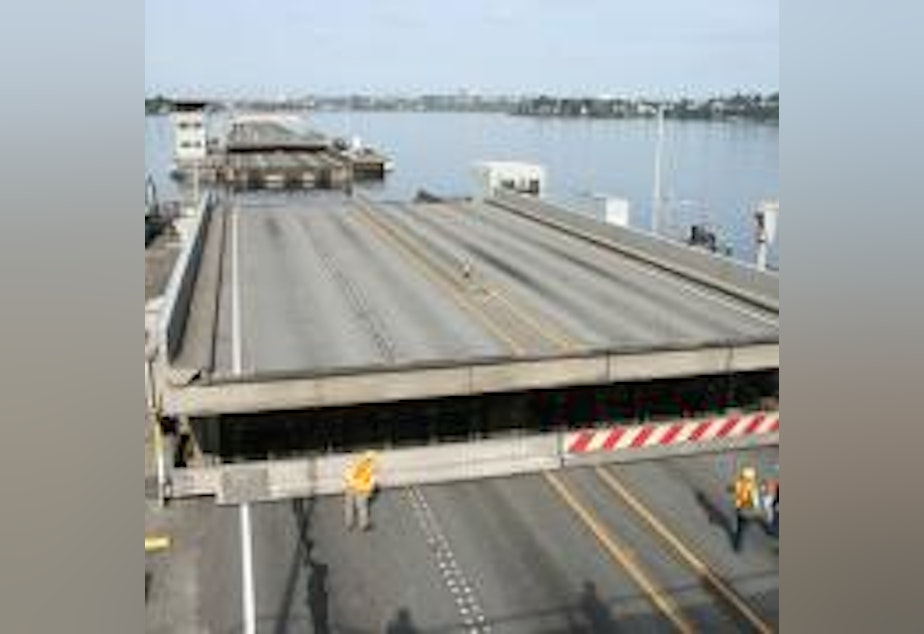SR 520 Floating Bridge Celebrates 50 Years

August 28, 1963 was a momentous day in American history, and it was also a pretty big day in Seattle. At the same time that Dr. Martin Luther King, Jr. was giving his landmark “I Have A Dream” speech at the Lincoln Memorial, then-Washington governor Albert Rosellini was also addressing a crowd. But Rosellini was in the middle of Lake Washington, on a brand-new floating bridge that would eventually be known as State Route 520.
The 22-mile long and two mile-wide Lake Washington has been critical to transportation of people and goods from the earliest of times. In the 19th and early 20th centuries, the water was a highway for boats and ferries criss-crossing from Madison Park in Seattle to lakefront communities such as Kirkland and Houghton. A ferry boat was the only way to get a car across Lake Washington until 1940, when the first floating bridge opened south of downtown.
A decade later, Seattle was booming. Boeing and other local businesses were riding the wave of post-war economic expansion. Thousands were moving here for jobs, and the east side of the lake began to morph from farms and forests into a giant suburb. The lake that had once been a transportation asset was now a barrier to a growing community.
Something had to be done. The old lake ferry had made its last run in 1950, and the one bridge across the water just wasn’t enough anymore.
The solution was a new bridge, but few could agree on where to put it. The debate dragged on for nearly a decade, and people got frustrated. In 1959, local activists and a Seattle radio station produced a parody recording, imagining the community 20 years in the future with still no second bridge. In this parallel reality, people were shot like missiles from Eastside suburbs to downtown Seattle.
The bridge committee eventually chose a location and the new bridge from Montlake to Medina opened to great fanfare on August 28, 1963 with a parade and speechmaking at mid-span. The toll to cross was 35 cents.
From its earliest years, the bridge carried far more traffic than planners had anticipated. All those suburban homes on the Eastside meant a huge westbound commute to Seattle each morning and a huge eastbound commute homeward every afternoon. The tollbooths collected so much revenue, the bridge paid for itself more than 20 years earlier than originally planned — and so the tollbooths went away. But traffic continued to increase, creating more wear and tear.
The bridge suffered other abuse, too — like windstorms or the occasional accident. It was decided that a bigger and stronger bridge needed to be built. The cost would be billions of dollars. It took special legislation, but the state began collecting tolls again on the old bridge in December 2011 to help fund the bigger replacement bridge.
If all goes according to plan, the new SR 520 bridge just might help avoid the kinds of unconventional transportation solutions imagined by those impatient activists back in the 1950s.
